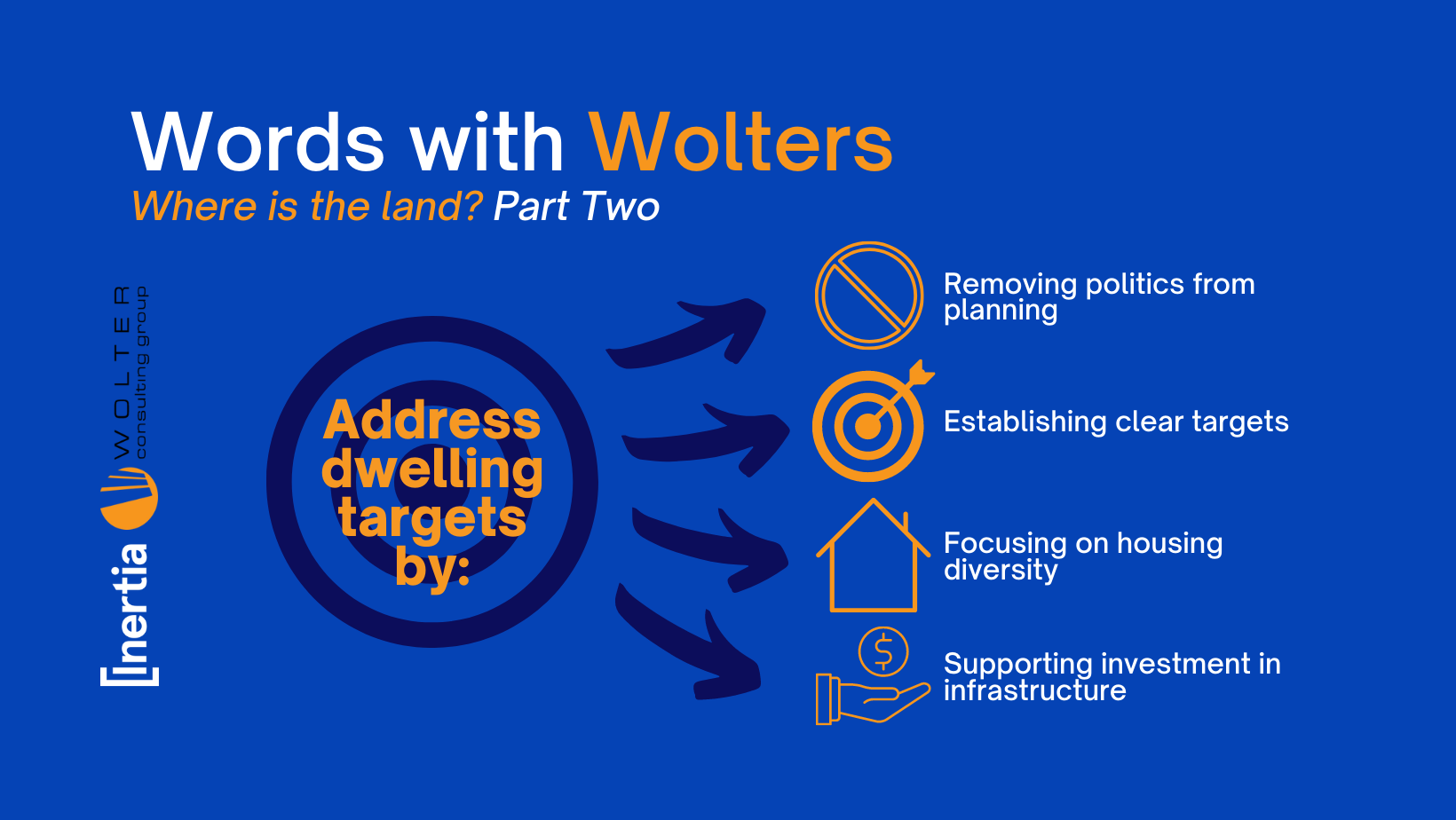Rethinking Dwelling Targets and Suburb Plans

As Queensland struggles to manage the availability of land, rising property costs and significant interstate migration, maybe it is time to more closely examine a vital driver of the development industry; dwelling targets.
Handed down by the State Government and linked to regional plans, achieving dwelling targets are the responsibility of local authorities, allocating each council a number that they required to achieve during an allotted time frame.
Split across consolidation (infill) and expansion (greenfield) area, the dwelling targets act as a way of ensuring we meet the needs of a growing region, providing housing, commercial and industrial spaces to support the state’s economic growth.
However, according to Natalie Rayment, Executive Director of Wolter Consulting, now is the time to reflect on the present approach, and with the South East Queensland Regional Plan approaching a review period, an opportunity to suggest ways in which we must rethink dwelling targets and suburb plans.
“I am in favour of setting dwelling targets, but the present approach needs to be reviewed. Targets are important, but they do not currently meet the needs of our industry or, most importantly, our community.”
“Presently, the targets are raw numbers, specifying a target, with little granularity or detail specifying the types of dwellings to be constructed. If a council has a target of an additional 10,000 greenfield and 10,000 infill dwellings, then they can achieve that target by allowing the development of 10,000 high rise units or 10,000 ‘traditional homes’ on a new estate on the urban fringe.”
“This example, while extreme, is not too far from the truth. In Brisbane, for example, townhouses are no longer a development option in the majority of residential areas. Instead, the region’s largest local authority is achieving their targets, through unit or traditional suburban housing developments.”
So what can be done to address the challenges that dwelling targets pose? Here are the areas that we believe need reform:
- Remove politics from planning – A key barrier to development is political will, and the impact NIMBYism has on local politicians, who react to the loudest voice and not always in the best interests of the community. Perhaps it is time to take a broader view of development cycles and regional/suburb plans to ensure that all local governments can deliver on their commitments and demonstrate to their communities that development will be supported with investment in associated infrastructure across civil and social works.
In other sectors, bodies such as Infrastructure Australia are charged with managing major investments and mechanisms such as City Deals provide clarity of investment, activity and ensure three tiers of government work in partnership. We would welcome a similar approach to development being taken to provide a clear and non-political roadmap that can be articulated to all stakeholders.
- Establish clearer targets – Clearer targets are needed, and they must be linked to dwelling types and infill/greenfield developments. It is imperative that targets are clear, balanced, achievable and measurable.
- Focus on housing diversity – People need choice, and blanket targets do not deliver it. We would encourage targets to be linked to the types of housing that people want in the locations that they desire. A mix of inner-city, suburban, regional and rural opportunities should be considered along with appropriately weighted targets to support sustainable development.
- Support investment in infrastructure – Billions of dollars has been and are being invested in Queensland. Linked to project funding and delivery should be dwelling targets to take the best possible advantage of all modes of transport. Increasing density around major transport hubs is a powerful way to increase availability and diversity.
 Back to News
Back to News
